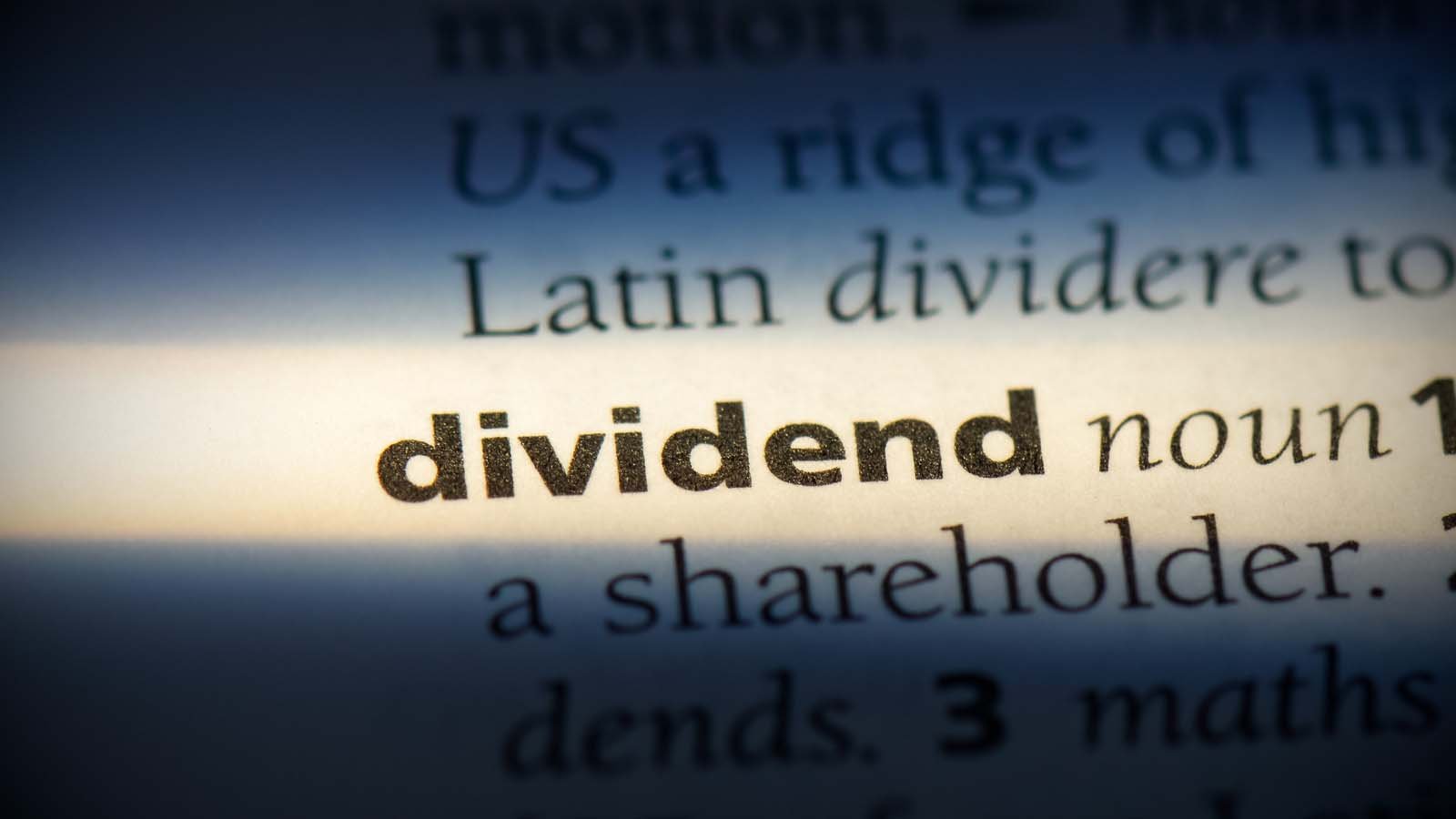If the will-it-or-won’t-it game that the Federal Reserve is playing tips the hat toward monetary policy doves, then investors really ought to consider high-yield dividend stocks for falling interest rates. To be sure, recent consumer data shows that prices rose 0.3% higher than expected. So, it’s not entirely clear that rate cuts are coming.
Nevertheless, as long as broader economic data points in the right direction, the Fed may go through with a dovish policy shift. If so, it plans to think ahead about high-yield dividend stocks for falling interest rates. Primarily, money will become “cheaper” if you will, thus shifting the risk-reward profile to growth-oriented asset classes.
However, this dynamic should also benefit passive income providers. As the yield on newly issued government bonds decline, these debt securities will apply less competition on dividend-paying companies. Further, investors can get a double bonus by targeting businesses that should be relevant in a low-interest-rate environment.
With possibly major changes on the way, below are high-yield dividend stocks for falling interest rates.
Darden Restaurants (DRI)

A tricky but compelling idea for high-yield dividend stocks for falling interest rates, Darden Restaurants (NYSE:DRI) deserves closer examination. I say it’s tricky because in the past 52 weeks, the performance has been modest, up a bit over 5%. Further, as a restaurant operator, Darden could be vulnerable to the trade-down effect. Basically, consumers could trade down to cheaper sources of nutrition.
That said, retail sales for restaurants and other eating places have been robust, soaring since the 2020 doldrums. In all fairness, the metric declined heading into October. However, this dynamic could be due to consumers spending less ahead of a challenging holiday season. Still, if the Fed lowers interest rates, demand for eating establishments could march back higher.
Generally speaking, lower rates means lower borrowing costs, which tends to spark hiring. With the labor market stabilized, people may feel comfortable spending their discretionary funds toward nights out. Also, it’s tough to complain about the forward yield of 3.33%, above the consumer discretionary sector’s average yield of 1.89%.
Vail Resorts (MTN)

Another tricky proposition for high-yield dividend stocks for falling interest rates, Vail Resorts (NYSE:MTN) is a mountain resort company. Its divided into three divisions, which broadly focus on operating resort properties and providing lodging services to customers. It’s a risky idea because in the past 52 weeks, MTN slipped more than 14%. However, should the Fed go dovish, Vail Resorts could be due for a recovery.
To be sure, it’s not that monetary policy directly impacts the mountain resort industry. Further, folks who go skiing at these resorts tend to be higher income. However, the Fed does have a material impact on borrowing costs. And that plays a major role in company’s expansionary endeavors. Also, the opposite dynamic may occur. If borrowing costs rise, enterprises could be looking to cut back.
Indeed, throughout much of the post-pandemic period, several companies issued pink slips. However, lower rates may also translate to economic stabilization. If so, demand for entertainment may rise as people feel more comfortable with their discretionary spending. Enticingly, Vail offers a forward yield of 3.81%.
IBM (IBM)

It’s not the sexiest idea by any means. However, if you’re seeking high-yield dividend stocks for falling interest rates, IBM (NYSE:IBM) looks awfully attractive. Sure, analysts don’t like it, rating shares a consensus hold. Among 11 expert voices in total, two of them rate IBM stock as a sell. Additionally, the average price target sits at $157.70, implying almost 5% downside risk.
By these stats, the legacy tech firm is hardly auspicious. Still, the company offers myriad relevancies, from artificial intelligence, machine learning, cybersecurity, and even the blockchain. And while experts continue to doubt it, that’s also part of its charm. In the past 52 weeks, the security gained over 14%. And in the trailing six months, it’s up almost 24%.
While several hedge funds have dumped shares of Big Blue, since the first quarter of last year, there has been a noticeable uptick in acquisitions. One factor that everyone can agree upon is the forward yield of 4%. That’s much higher than the underlying tech sector’s average yield of 1.37%. Plus, with 28 years of consecutive payout increases, it offers much-needed confidence.
Rio Tinto (RIO)

A leading global mining group, Rio Tinto (NYSE:RIO) suffered a disappointing performance in 2023. In the past 52 weeks, shares dipped almost 8%. However, analysts are also confident in the company’s comeback potential. While we’re only talking about three expert voices, all of them rate shares a strong buy. Further, the average price target lands at $79.75, implying almost 14% upside potential.
That’s not bad considering that the company also offers a forward yield of 5.04%. In addition, the payout ratio comes in at 49.26%, which is reasonable in terms of sustainability. Now, the one immediate cautionary point is that Rio Tinto currently lacks a track record of annual payout increases. Still, the underlying relevance of the business should make RIO one of the high-yield dividend stocks for falling interest rates.
At the core, lower rates usually translate to a devalued dollar. And since commodities are priced in dollars, they should rise. Second, Rio Tinto specializes in several in-demand metals, including lithium and copper. With electric vehicles projected to only rise from here, RIO seems a smart idea for high-yield dividend stocks for falling interest rates.
Philip Morris (PM)

At first glance, the immediate criticism that you could level at Philip Morris (NYSE:PM) is its controversy. After all, cigarette smoking lost much of its social cachet. And that relates to the criticism stemming from a second glance: relevance or lack thereof. As myriad studies show, smoking prevalence – both in the U.S. and globally – have fallen significantly. So, why bother with PM?
Well, I’ll tell you. Though analog smoking per say has fallen, vaping or e-cigarette use has only accelerated. According to Grand View Research, the global e-cigarette and vape market size may hit $182.84 billion by 2030. If so, that would translate to a compound annual growth rate (CAGR) of 30.6% from 2023.
To be fair, monetary policy might not have much to say about this industry. However, if borrowing costs decline, PM makes for an enticing idea among high-yield dividend stocks for falling interest rates. Right now, the company offers a forward yield of 5.46%. Yes, the payout ratio is elevated at 72.62%. Still, by serving a burgeoning growth market, PM seems a compelling opportunity.
Kinder Morgan (KMI)

Tied to the broader energy infrastructure, Kinder Morgan (NYSE:KMI) presents a solid idea for just about any circumstance. Tied to the midstream component of the hydrocarbon value chain, Kinder Morgan specializes in storage and transportation services. While we can talk all day about EVs eventually ruling the roadways, the reality is that for now (and arguably for the foreseeable future), the world runs on oil.
In that way, KMI enjoys “job security.” But it’s also an enticing idea for high-yield dividend stocks for falling interest rates. With lower borrowing costs comes an incentive among enterprises to do something with their money besides sitting on it. Of course, many if not most companies decide to expand, which requires workers. Thus, the increased mobility of people and commerce should boost demand for KMI.
While you’re waiting for that narrative to pick up steam, investors can bank on its forward yield of 6.29%. True, its payout ratio is high at 90.53%. But it also enjoys six years of annual dividend increases. And with the always-relevant midstream sector holding up the economy, KMI seems a smart bet.
Stellantis (STLA)

Probably the riskiest idea among high-yield dividend stocks for falling interest rates, automaker Stellantis (NYSE:STLA) could go either way. Either you’re going to tell me how stupid I am or this could be a 500 IQ play. That’s why I put this name in the last place because I’m not 100% sure where it might go. Still, I am comforted that analysts rate shares a consensus strong buy with a $25.99 price target.
One reason that gets me excited about the upside prospects is Stellantis’ Dodge brand. With the iconic nameplate set to launch a Dodge Charge EV – think muscle car looks but with zero emissions – it could change the game. Let’s face it: as great as Tesla (NASDAQ:TSLA) is, its design language is boring. With companies like Stellantis (through Dodge) offering consumers choices, STLA could be very interesting in the long run.
Also, with reduced borrowing costs, consumers may be willing to consider high-ticket items. If you want to speculate, Stellantis offers an enticing forward yield of 6.56%.
On the date of publication, Josh Enomoto did not have (either directly or indirectly) any positions in the securities mentioned in this article. The opinions expressed in this article are those of the writer, subject to the InvestorPlace.com Publishing Guidelines.
